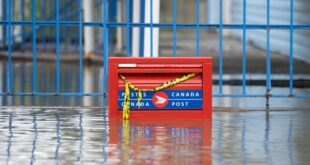
The World Bank’s board of executive directors approved a $500-million credit line to help the Philippines better handle disasters and climate threats, with a focus on protecting schools, health facilities and human settlements.
It said in a statement Friday the Philippines Disaster Risk Management and Climate Development Policy Loan with a Catastrophe Deferred Drawdown Option sets aside $500 million that the government could quickly draw upon when major natural disasters or health crises hit, minimizing the impact on the economy and long-term development.
“The real benefit of this support is its ability to rapidly deliver crucial services – such as healthcare, shelter, and food – to those most impacted by disasters or climate events,” said Ndiamé Diop, the World Bank country director for Brunei, Malaysia, Philippines and Thailand.
“It’s about making sure the people who have the least are taken care of and can bounce back immediately after these disaster events,” he said.
About 60 percent of the country’s total land area and at least 74 percent of Filipinos are vulnerable to multiple hazards including typhoons, landslides, floods, storm surges, droughts, volcanic eruptions and earthquakes.
Natural disasters regularly damage infrastructure, disrupt the delivery of essential education and health services, and destroy homes and personal belongings, making life harder for many families and pushing some into poverty.
The World Bank said about 78 percent of public schools and 96 percent of students in the Philippines are exposed and vulnerable to multiple hazards. Between 2021 and 2023, around 4,000 schools were damaged due to various disasters, resulting in the disruption of learning continuity for two million children.
Diop said an important part of the support, Diop emphasized, is that it helps ensure the government has the resources to restore or rebuild damaged schools following a disaster. This makes sure that children can continue their education without significant interruptions.
The financing isn’t just about responding to disasters but also about preparing for them in advance to mitigate their impact, he said.
The reforms implemented as a part of the financing are expected to help make schools more disaster-proof, help communities plan safer spaces and green areas and strengthen health facilities to withstand future disasters and health emergencies.
“Extreme climate events frequently cause significant damage to infrastructure, communities, and people’s livelihoods,” said Lesley Cordero, senior disaster risk management specialist at the World Bank.
“The reforms this financial instrument supports are key in making sure places where people learn, live, and take care of their health are built with climate and disaster challenges in mind. This way, services will not be interrupted when natural disasters strike, and this is particularly important for those who are already vulnerable,” Cordero said.
The funds can disburse when the Philippine president declares a state of calamity in response to a natural disaster or public health emergency. The declaration triggers support in line with the Philippine Disaster Risk Reduction and Management Act of 2010 (DRRM Act).
The full amount of the financial support will be available for three years, giving the government immediate access to funds when they need it, enabling it to better manage the cost of shocks and protect the Philippine population.
The financial support has a revolving feature, and the three-year drawdown period may be renewed up to four times, for a total maximum period of 15 years.
*****
Credit belongs to: www.manilastandard.net
 Atin Ito First Filipino Community Newspaper in Ontario
Atin Ito First Filipino Community Newspaper in Ontario






